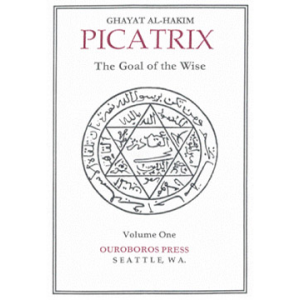

Book II – “Of the figures of the heavens in general, and of the general motion of the sphere, and of their effects in this world”.Book I – “Of the heavens and the effects they cause through images made under them”.The work is partitioned into four books: The work is partitioned into four books: It is possibly the largest and most extensive handbooks of magic, a cornerstone of the grimoire tradition.

Picatrix is a manual for constructing talismans, mixing magical compounds, summoning planetary spirits, and determining astrological conditions. The Spanish and Latin versions were the only ones known to western scholars until Wilhelm Printz discovered an Arabic version in or around 1920. More recently however, Maribel Fierro has argued for attributing the work to al-Qurtubi, an attribution that is accepted as most plausible.

1007), the Madrilenian polymath, or alternatively to one of his disciples, under the name, Maslama ibn Ahmad al-Majriti (an Andalusian mathematician). Traditionally, Gayat al-Hakim has been attributed to Abu ’l-Qāsim Maslama ibn Aḥmad al-Faraḍī al-Ḥāsib al-Maj̲rīṭī al-Qurṭubī al-Andalusī (d. The Latin version was produced sometime later, based on translation of the Spanish manuscripts. According to the Latin prologue, the word “Picatrix” is the name of the author: “One wise philosopher, the noble and honored Picatrix”Īccording to the prologue of the Latin translation, Picatrix was translated into Spanish from the Arabic by order of Alphonso X of Castile at some time between 12. The original Arabic work was translated into Spanish and then into Latin during the 13th century.

The Arabic title has been translated as “The Aim of the Sage” or “The Goal of The Wise”. Picatrix is the name used today, and historically in Christian Europe, for a grimoire originally written in Arabic under the title, Ghāyat al-Ḥakīm ( غاية الحكيم ), which most scholars assume was written in the middle of the 11th century, though a supported argument for composition in the first half of the 10th century has been made.


 0 kommentar(er)
0 kommentar(er)
